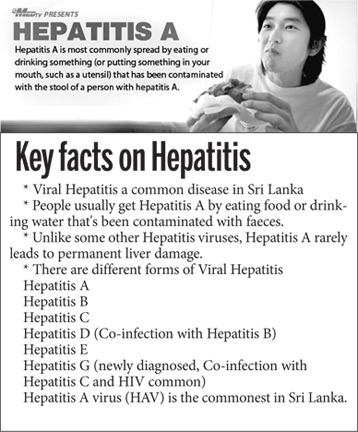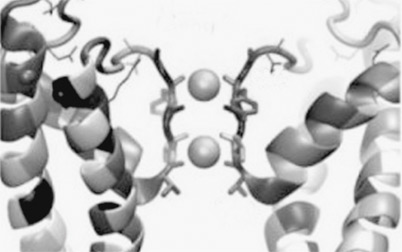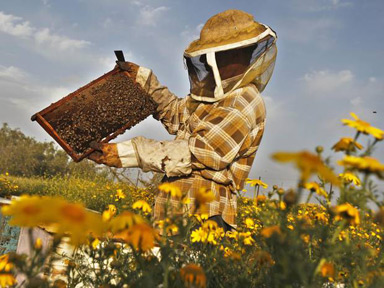|

The Northwest monsoons can lead to food and water
borne diseases…:
Hepatitis A occurs mostly during rainy weather
By Carol Aloysius
The heavy rains currently being experienced islandwide, has resulted
in many areas of the country being flooded, with thousands of families
displaced from their homes and forced to take shelter in schools, church
halls, temples and camps.
 Health officials have warned that lack of safe drinking water,
hygienically cooked food which is often lacking in such temporary
shelters, and poor personal hygiene could lead to an outbreak of
contagious diseases. Health officials have warned that lack of safe drinking water,
hygienically cooked food which is often lacking in such temporary
shelters, and poor personal hygiene could lead to an outbreak of
contagious diseases.
Of these, the most virulent is perhaps Hepatitis A, which as in the
case of most other infectious diseases at this time, can be prevented
with simple healthy practices, that even a child could follow.
The Sunday Observer spoke to the Chief Medical Officer of the
Dehiwala - Mt Lavinia, Municipality Division, Dr INDIKA ELLAWELA. He
says several patients in the area have been admitted with symptoms of
food and water borne diseases following the rains. “This could have been
avoided if they had followed the simple instructions which the Health
Ministry has given to prevent such diseases”, he laments, adding that
patients attending most outdoor patient clinics in high risk areas are
advised on how to protect themselves against infectious diseases during
rainy weather. He shares some of this advice focussing mainly on
Hepatitis A which is among the commonest food and water borne diseases
at this time of the year.
Excerpts…
Q. The North West monsoon is now in full swing and expected to
continue through October to December. Is it correct that heavy rains are
often associated with an outbreak of food and water borne diseases?
A. Yes. Usually we see an outbreak of diseases such as
diarrhoea, dysentery and Hepatitis at this time of the year due to the
rains.
Q. How does rainy weather lead to these diseases?
A. Because when it rains, it is difficult to access safe
drinking water and food. Furthermore, many people living in overcrowded
areas or in temporary shelters, do not follow good personal hygienic
practices.
Q. Of the common water and food borne diseases that occur
during this period, what in your opinion is perhaps the most dangerous
or virulent?
A. Hepatitis A.
Q. What is this disease? How is it caused?
A. Hepatitis A is a liver disease caused by the hepatitis A
virus.
Hepatitis A occurs sporadically and in epidemics worldwide, with a
tendency for cyclic recurrences. Every year there are an estimated 1.4
million cases of hepatitis A worldwide.
Q. Is it infectious?
 A. Yes, all forms of the Hepatitis virus are infectious but
mode of transmission differs according to the type of Hepatitis.The
Hepatitis A virus is one of the most frequent causes of food borne
infection. A. Yes, all forms of the Hepatitis virus are infectious but
mode of transmission differs according to the type of Hepatitis.The
Hepatitis A virus is one of the most frequent causes of food borne
infection.
The disease is closely associated with unsafe water, inadequate
sanitation and poor personal hygiene.
Q. How does the virus spread?
A. The virus is primarily spread when an uninfected (and
unvaccinated) person ingests food or water that is contaminated with the
faeces of an infected person.
Water-borne outbreaks, though infrequent, are usually associated with
sewage-contaminated or inadequately treated water.
Other risk factors for the disease include injecting drugs, living in
a household with an infected person, being a sexual partner of someone
with acute Hepatitis A infection and travelling to areas of high
endemicity without being immunised.
Q. Who are most at risk of getting it in Sri Lanka?
A. Evidence has shown that Hepatitis A is most common in
children and young adults in Sri Lanka.
Q. How long does it take for symptoms to present after the
virus enters the body?
A. Signs and symptoms of the disease will usually appear
following a period of 14 to 28 days after the entry of the virus into
the body.
Q. What are the most visible symptoms?
A. The symptoms range from mild to severe. They can include
fever, malaise, loss of appetite, diarrhoea, nausea, abdominal
discomfort, dark-coloured urine and jaundice (a yellowing of the skin
and whites of the eyes). Not everyone who is infected will have all of
the symptoms. Cases of Hepatitis A are not clinically distinguishable
from other types of acute viral hepatitis.
Q. Then how do you identify and diagnose Hepatitis A from
other types of acute viral Hepatitis?
A. Specific diagnosis is made by the detection of HAV-specific
IGM and IG antibodies in the blood. Additional tests include reverse
transcriptase polymerase chain reaction (RT-PCR) to detect the Hepatitis
A virus RNA, but this may require specialised laboratory facilities.
Q. What is the treatment?
A. There is no specific treatment for Hepatitis A.
Q. How long will it take for a patient to recover?
A. Recovery from symptoms following infection may be slow and
may take several weeks or months. Therapy is aimed at maintaining
comfort and adequate nutritional balance, including replacement of
fluids that are lost from vomiting and diarrhoea.
Q. What guidelines can you give us on how we can prevent
contracting the disease.
A. Hepatitis A is a preventable disease. Its spread can be
reduced in the following ways:
* Having adequate supplies of safe drinking water. Drinking
contaminated water in community tanks or in wells is one way of
contracting the disease. If you have a well, its best to chlorinate the
water before use. Consult a PHI if you need advice on how to do this.
* Proper disposal of sewage within communities
* Following good personal hygienic practices such as regular
hand-washing with safe water.
* Avoid eating raw vegetables
* Avoid eating raw meat
Q. Are there drugs to prevent Hepatitis A? Are they safe? What
are the side effects?
A. Several Hepatitis A vaccines are available internationally.
All are similar in terms of how well they protect people from the virus
and their side-effects. No vaccine is licensed for children younger than
one year of age. Nearly 100 percent of people develop protective levels
of antibodies to the virus within one month after a single dose of the
vaccine. Even after exposure to the virus, a single dose of the vaccine
within two weeks of contact with the virus has protective effects.
Still, manufacturers recommend two vaccine doses to ensure a longer-term
protection of about five to eight years after vaccination. Millions of
people have been immunised worldwide with no serious adverse effects.
Q. When is the vaccine given usually?
A. The vaccine can be given as part of regular childhood
immunisations programs and also with other vaccines and also with other
vaccines given for travellers.
Q. Can patients with viral Hepatitis be treated at home?
A. Only if they are mild cases. If treated at home, it is very
important that the patient is isolated so that he does not infect others
inside the same house.
Those with severe symptoms of the disease however, must be treated in
a hospital facility, where the environment is clean and there is trained
staff in attendance.
Q. Your message to the public?
A. Hepatitis is a preventable disease. It can be prevented with
universal vaccination.
If treated in time, you can avoid long term complications that can
lead to liver disease and liver cancer.
Calcium has surprising role in sensing pain
When you accidentally touch a hot oven, you rapidly pull your hand
away. Although scientists know the basic neural circuits involved in
sensing and responding to such painful stimuli, they are still sorting
out the molecular players.
 Researchers have made a surprising discovery about the role of a key
molecule involved in pain in worms, and have built a structural model of
the molecule. These discoveries may help direct new strategies to treat
pain in people. Researchers have made a surprising discovery about the role of a key
molecule involved in pain in worms, and have built a structural model of
the molecule. These discoveries may help direct new strategies to treat
pain in people.
In humans and other mammals, a family of molecules called TRP ion
channels plays a crucial role in nerve cells that directly sense painful
stimuli.
Researchers are now blocking these channels in clinical trials to
evaluate this as a possible treatment for various types of pain.
The roundworm Caenorhabditis elegans also expresses TRP channels -
one of which is called OSM-9 - in its single head pain-sensing neuron
(which is similar to the pain-sensing nerve cells for the human face).
OSM-9 is not only vital for detecting danger signals in the tiny worms,
but is also a functional match to TRPV4, a mammalian TRP channel
involved in sensing pain.
In the new study, researchers created a series of genetic mutant
worms in which parts of the OSM-9 channel were disabled or replaced and
then tested the engineered worms’ reactions to overly salty solution,
which is normally aversive and painful.
Specifically, the mutant worms had alterations in the pore of the
OSM-9 channels in their pain-sensing neuron, which gets fired up upon
channel activation to allow calcium and sodium to flow into the neuron.
That, in turn, was thought to switch on the neural circuit that encodes
rapid withdrawal behaviour - like pulling the finger from the stove.
“People strongly believed that calcium entering the cell through the
TRP channel is everything in terms of cellular activation,” said lead
author Wolfgang Liedtke, an associate professor of neurology at Duke
University School of Medicine. With then-graduate student Amanda Lindy,
“we wanted to systemically mutagenise the OSM-9 pore and see what we
could find in the live animal, in its pain behaviour,” Liedtke said.
To the group's surprise, changing various bits of OSM-9's pore did
not change most of the mutant worms’ reactions to the salty solution.
However, these mutations did affect the flow of calcium into the cell.
The disconnect they saw suggested the calcium was not playing a direct
role in the worms’ avoidance of danger signals.
Calcium has been thought to be indispensable for pain behaviour - not
only in worms’ channels but in pain-related TRP channels in mammals. So
results from the engineered OSM-9 mutant worms will change a central
concept for the understanding of pain, Liedtke said.
To see whether calcium might instead play a role in the worms’
ability to adapt to repeated painful stimuli, the group then repeatedly
exposed pore-mutant worms to the aversive and pain stimuli. After the
tenth trial, a normal worm becomes less sensitive to high salt. But one
mutant worm with a minimal change to one specific part of its OSM-9 pore
- altered so that calcium no longer entered but sodium did - was just as
sensitive on the tenth trial as on the first.
The results confirmed that calcium flow through the channel makes the
worms more adaptable to painful stimuli; it helps them cope with the
onslaught by desensitising them. This could well represent a survival
advantage, Liedtke said.
To put the findings into a structural context, Liedtke collaborated
with computational protein scientists Damian van Rossum and Andriy
Anishkin from Penn State University, who built a structural model of
OSM-9 that was based the recently resolved structure of TRPV1, the
molecule that senses pain caused by heat and hot chilli peppers.
The team was then able to visualise the key parts of the OSM-9 pore
in the context of the entire channel. They understood better how the
pore holds its shape and allows sodium and calcium to pass. Liedtke said
that understanding this structure could be a great help in designing
compounds that will not completely block the channel but will just
prevent calcium from entering the cell. Although calcium helps
desensitize worms to painful stimuli in the near term, it might set up
chronic, pathological pain circuits in the long term, Liedtke said.
So, as a next step, the group plans to assess the longer-term effects
calcium flow has in pain neurons. For example, calcium could change the
expression of particular genes in the sensory neuron.
And such gene expression changes could underlie chronic, pathological
pain.
“We assume, and so far the evidence is quite good, that chronic,
pathological pain has to do with people's genetic switches in their
sensory system set in the wrong way, long term. That's something our new
worm model will now allow us to approach rationally by experimentation,”
Liedtke said.
- MNT
Bacteria, an alternative to antibiotics
Bacteria found in honeybees could be used as an alternative to
antibiotics and in the fight against antibiotic-resistant strains of
MRSA.
|

Raw honey has been used to treat infections for millennia - and
now scientists may have
pinpointed why it was so effective |
For millennia, raw unmanufactured honey has been used to treat
infections. Scientists believe its effectiveness could lie in a unique
formula comprised of 13 types of lactic acid bacteria found in the
stomachs of bees.
The bacteria, which are no longer active in shop-bought honey,
produce a myriad of active anti-microbial compounds.
The findings could be vital both in developing countries, where fresh
honey is easily available, as well as for Western countries where
antibiotic resistance is an increasingly concerning issue. By applying
the bacteria to pathogens found in severe human wounds - including MRSA
- scientists from Lund University, Sweden, found that the formula from a
bee’s stomach successfully counteracted the infections.
Researchers believe that the formula works so potently because it
contains a broad spectrum of active substances, unlike conventional
man-made antibiotics.
“Antibiotics are mostly one active substance, effective against only
a narrow spectrum of bacteria. When used alive, these 13 lactic acid
bacteria produce the right kind of antimicrobial compounds as needed,
depending on the threat,” Dr Tobias Olofsson of the Medical Microbiology
department at Lund University said.
“It seems to have worked well for millions of years of protecting
bees’ health and honey against other harmful microorganisms. “However,
since store-bought honey doesn't contain the living lactic acid
bacteria, many of its unique properties have been lost in recent times,”
he said.
To take the study forward, scientists will investigate wider clinical
use against topical infections, on both humans and animals.
The findings are likely to give further ammunition to bee protection
groups, after a separate study found that the use of neonicotinoids -
the world’s most commonly used pesticides - damage vital bee
populations.
It warned that the pesticides, which are linked to the decline of
honeybees and other beneficial organisms including earthworms and
butterflies, are having a dramatic impact on ecosystems that support
food production and wildlife.
- The Independent
|

